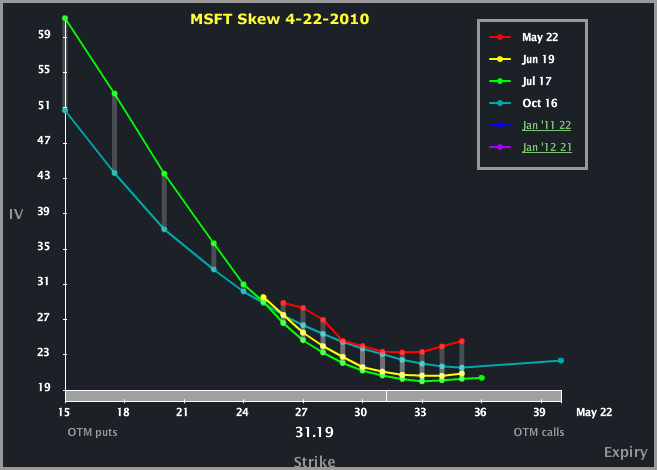options-george
Guest Author
- Messages
- 484
- Likes
- 94
hi, i have a question about option prices.
I am looking at trading DIA options. On Friday DIA closed at 111.96.
My question is this:
Assume I buy any of the DIA 111, 112 or 113 May call options.
I downloaded an option value calculator here:
http://spreadsheets.google.com/pub?...Og&single=true&gid=8&range=A1:G25&output=html
Example DIA 112 Call
Value if DIA @ 113 = $2.03
Value if DIA @ 112 = $1.47
Value if DIA @ 111 = $1.02
It seems to me that the appreciation of the option value for a $1 rise is greater ($0.56)than the depreciation of the option value for a $1 fall ($0.45). Is this correct? Assume that the options are traded intra-day so that time decay is minimal.
Would this mean that I a $0.45 loss is as likley as a $0.56 gain?
Look forward to any comments that people may have,
George
I am looking at trading DIA options. On Friday DIA closed at 111.96.
My question is this:
Assume I buy any of the DIA 111, 112 or 113 May call options.
I downloaded an option value calculator here:
http://spreadsheets.google.com/pub?...Og&single=true&gid=8&range=A1:G25&output=html
Example DIA 112 Call
Value if DIA @ 113 = $2.03
Value if DIA @ 112 = $1.47
Value if DIA @ 111 = $1.02
It seems to me that the appreciation of the option value for a $1 rise is greater ($0.56)than the depreciation of the option value for a $1 fall ($0.45). Is this correct? Assume that the options are traded intra-day so that time decay is minimal.
Would this mean that I a $0.45 loss is as likley as a $0.56 gain?
Look forward to any comments that people may have,
George

